For the past 10 years, the structure of own-label products has been clear, with three distinct tiers: good, better and best. And it was Tesco that developed the strategy. Kickstarting it in 1993 with the launch of Tesco Value, Asda and Sainsbury’s followed suit with SmartPrice and Basics, and Morrisons with Bettabuy.
Tesco Finest, launched in 1998, cemented the own-label proposition. Again, it pre-empted a raft of similar launches from the other multiples, all eager to offer a luxurious, more expensive range of products.
So maybe it shouldn’t have come as such a surprise last week when Tesco once again broke the mould by unveiling yet another tier of products. In a bid to become ‘Britain’s biggest discounter’, and with packaging reminiscent of the 1970s, it launched a range dubbed by Tesco as Discount Brands. High-profile TV and press ads complemented the range of 350 tertiary brands, with names such as Sun Sip cola, All About Shine shampoo and Country Barn wheat biscuits. Market Value, a fresh produce range, was also introduced. But the launch has blown apart the good-better-best structure and left rival retailers and branding experts baffled.
“I was the first to congratulate Tesco on its Value strategy and urged us to follow suit,” said a leading supermarket CEO. “But on this one I’m really not sure.” He was not alone in lacking confidence.
“It rather smacks of desperation,” another senior executive added. However, another executive said he had confidence in Tesco’s ability to spot a niche.
“When Tesco did Value I remember most of the board were disparaging. But doing it for tactical reasons was inspired.”
The confusing thing is trying to understand the price architecture, says David Vardy, director of retail at Interbrands. “They already came up with the idea of good, better and best, so then to introduce these pseudo-brands is confusing.”
Some products sit between the price of Value and standard own-label. Others are slightly more expensive than standard own-label. There is also confusion over the fresh produce offering – chicken, pork, fruit and veg are available under the Market Value logo, yet Tesco Value is still available in these categories. So you can choose between a 5kg Tesco Value bag of potatoes of all shapes and sizes, or a 2.5kg Market Value bag of uniformly sized potatoes, both with similar blue and white stripy labels.
“I think the consumer is going to be very confused,” agrees Jonathan Gabay of Brand Forensics. “Tesco always stood for quality at affordable prices. Now the message seems to be affordable prices and hopefully quality.”
Kate Waddell, director of consumer brands at Dragon, is also perplexed. “The Value range versus the Discount range may be a confusion to shoppers, especially if there is an unclear price differential between Value and Discount. Add in the confusion of bogofs and link saves and Tesco could have a confused consumer.”
However, some are more optimistic. Tesco knows exactly what the market wants, says Justin Scarborough, retail analyst at ABN Amro. “The launching of the own-label brands, which are obviously new and different, is quite shrewd. If you’ve got consumers who want to shop for branded products, they either buy the main brands that are in a supermarket, or they trust the integrity and the brand equity of the retailer to buy their private label. Or they will go elsewhere. What Tesco has done by adding another sub-label in there is to offer another choice for those consumers who want to buy brands and not buy Tesco Value. I think it is quite sensible.”
That is certainly Tesco’s line. Richard Brasher, commercial and marketing director, shrugged off any suggestion it was a confusing move last week, arguing that Tesco was simply responding to customer demand. Gabay also points out that customers who might be embarrassed by filling their trolleys with Value products could find the Discount Brands products appealing.
But others say Tesco is running scared from the discounters. When combined, Aldi, Lidl and Netto may scrape barely a 6% share of the grocery market, but Aldi is growing its sales at a rate of 20.8% year-on-year, and Lidl is up 11%, according to TNS data for the 12 weeks to 7 September. Meanwhile, Tesco’s sales growth of 6.7% is largely in line with inflation and its actual market share has slipped 0.2 percentage points to 31.5%.
The product launch is a reactive move rather than a market-leading innovation, says Aiden Bocci, chief executive of Commercial Advantage. “It looks as if they are struggling to define their sense of direction,” he says. “The rebranding as ‘Britain’s biggest discounter’ is not credible. Discounters have a completely different operating model and Tesco can’t compete.”
Aldi managing director Paul Foley agrees. “We are flattered, but we just don’t compare on price. We compare on quality.” Others call into question the use of a prominent aisle near the entrance to the store, full of discounter products.
“Most consumers don’t want to be branded by their need for discount goods,” says Waddell. “Let’s not forget that the Value brand alternatives are merchandised with the brand and own-label alternatives. In some instances the ‘discounted’ badge can also create concerns with consumers that the brands have in some way been diluted, had something taken out, and are of lesser quality than they are used to.”
However, if it works, she thinks the rewards for Tesco could be big. “It may be powerful enough to encourage the Aldi loyalists to trade up to the Tesco shop.”
But Scarborough argues far too much has been made of discounters’ threat. “You underestimate at your peril Tesco’s ability to manage price, range and segmentation and it is completely against the limited assortment discounters put out there. People seem to forget a significant amount of the discounters’ annual percentage growth is from non-food.”
There is also the continuing impact of Tesco’s own label on its leading brand offering to consider. Tesco has already upset some brand owners with the Cheaper Alternatives feature on its website, which offers the shopper the choice of less costly own-brand alternatives when they select leading brands.
Says Waddell: “It also should be an early warning to other brand owners that Tesco is prepared to shorten brand margins further in the pursuit of retaining its loyal customers. I have no doubt Tesco will be squeezing its other brand owners further in their buying negotiations.”
Since the announcement, there has been no signal so far that other retailers are set to follow Tesco’s move. Asda has ruled it out, pursuing an aggressive price-cutting strategy with its Smart Price range, while Sainsbury’s says it is content with its three-tier structure and Morrisons is also sitting tight.
Yet while the reaction is muted, no-one can be complacent when Britain’s largest retailer is at work. “A discount brand is an oxymoron,” says one retail consultant. “But if anyone can make an oxymoron work, it’s Tesco.”
So maybe it shouldn’t have come as such a surprise last week when Tesco once again broke the mould by unveiling yet another tier of products. In a bid to become ‘Britain’s biggest discounter’, and with packaging reminiscent of the 1970s, it launched a range dubbed by Tesco as Discount Brands. High-profile TV and press ads complemented the range of 350 tertiary brands, with names such as Sun Sip cola, All About Shine shampoo and Country Barn wheat biscuits. Market Value, a fresh produce range, was also introduced. But the launch has blown apart the good-better-best structure and left rival retailers and branding experts baffled.
“I was the first to congratulate Tesco on its Value strategy and urged us to follow suit,” said a leading supermarket CEO. “But on this one I’m really not sure.” He was not alone in lacking confidence.
“It rather smacks of desperation,” another senior executive added. However, another executive said he had confidence in Tesco’s ability to spot a niche.
“When Tesco did Value I remember most of the board were disparaging. But doing it for tactical reasons was inspired.”
The confusing thing is trying to understand the price architecture, says David Vardy, director of retail at Interbrands. “They already came up with the idea of good, better and best, so then to introduce these pseudo-brands is confusing.”
Some products sit between the price of Value and standard own-label. Others are slightly more expensive than standard own-label. There is also confusion over the fresh produce offering – chicken, pork, fruit and veg are available under the Market Value logo, yet Tesco Value is still available in these categories. So you can choose between a 5kg Tesco Value bag of potatoes of all shapes and sizes, or a 2.5kg Market Value bag of uniformly sized potatoes, both with similar blue and white stripy labels.
“I think the consumer is going to be very confused,” agrees Jonathan Gabay of Brand Forensics. “Tesco always stood for quality at affordable prices. Now the message seems to be affordable prices and hopefully quality.”
Kate Waddell, director of consumer brands at Dragon, is also perplexed. “The Value range versus the Discount range may be a confusion to shoppers, especially if there is an unclear price differential between Value and Discount. Add in the confusion of bogofs and link saves and Tesco could have a confused consumer.”
However, some are more optimistic. Tesco knows exactly what the market wants, says Justin Scarborough, retail analyst at ABN Amro. “The launching of the own-label brands, which are obviously new and different, is quite shrewd. If you’ve got consumers who want to shop for branded products, they either buy the main brands that are in a supermarket, or they trust the integrity and the brand equity of the retailer to buy their private label. Or they will go elsewhere. What Tesco has done by adding another sub-label in there is to offer another choice for those consumers who want to buy brands and not buy Tesco Value. I think it is quite sensible.”
That is certainly Tesco’s line. Richard Brasher, commercial and marketing director, shrugged off any suggestion it was a confusing move last week, arguing that Tesco was simply responding to customer demand. Gabay also points out that customers who might be embarrassed by filling their trolleys with Value products could find the Discount Brands products appealing.
But others say Tesco is running scared from the discounters. When combined, Aldi, Lidl and Netto may scrape barely a 6% share of the grocery market, but Aldi is growing its sales at a rate of 20.8% year-on-year, and Lidl is up 11%, according to TNS data for the 12 weeks to 7 September. Meanwhile, Tesco’s sales growth of 6.7% is largely in line with inflation and its actual market share has slipped 0.2 percentage points to 31.5%.
The product launch is a reactive move rather than a market-leading innovation, says Aiden Bocci, chief executive of Commercial Advantage. “It looks as if they are struggling to define their sense of direction,” he says. “The rebranding as ‘Britain’s biggest discounter’ is not credible. Discounters have a completely different operating model and Tesco can’t compete.”
Aldi managing director Paul Foley agrees. “We are flattered, but we just don’t compare on price. We compare on quality.” Others call into question the use of a prominent aisle near the entrance to the store, full of discounter products.
“Most consumers don’t want to be branded by their need for discount goods,” says Waddell. “Let’s not forget that the Value brand alternatives are merchandised with the brand and own-label alternatives. In some instances the ‘discounted’ badge can also create concerns with consumers that the brands have in some way been diluted, had something taken out, and are of lesser quality than they are used to.”
However, if it works, she thinks the rewards for Tesco could be big. “It may be powerful enough to encourage the Aldi loyalists to trade up to the Tesco shop.”
But Scarborough argues far too much has been made of discounters’ threat. “You underestimate at your peril Tesco’s ability to manage price, range and segmentation and it is completely against the limited assortment discounters put out there. People seem to forget a significant amount of the discounters’ annual percentage growth is from non-food.”
There is also the continuing impact of Tesco’s own label on its leading brand offering to consider. Tesco has already upset some brand owners with the Cheaper Alternatives feature on its website, which offers the shopper the choice of less costly own-brand alternatives when they select leading brands.
Says Waddell: “It also should be an early warning to other brand owners that Tesco is prepared to shorten brand margins further in the pursuit of retaining its loyal customers. I have no doubt Tesco will be squeezing its other brand owners further in their buying negotiations.”
Since the announcement, there has been no signal so far that other retailers are set to follow Tesco’s move. Asda has ruled it out, pursuing an aggressive price-cutting strategy with its Smart Price range, while Sainsbury’s says it is content with its three-tier structure and Morrisons is also sitting tight.
Yet while the reaction is muted, no-one can be complacent when Britain’s largest retailer is at work. “A discount brand is an oxymoron,” says one retail consultant. “But if anyone can make an oxymoron work, it’s Tesco.”



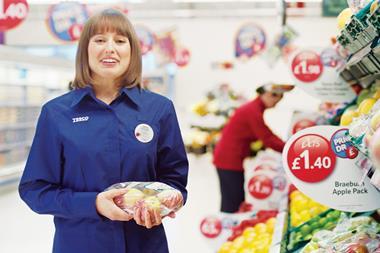

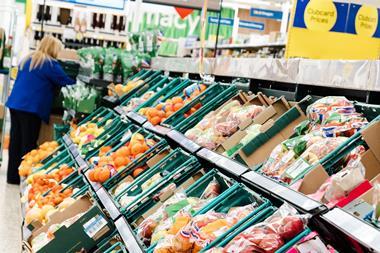

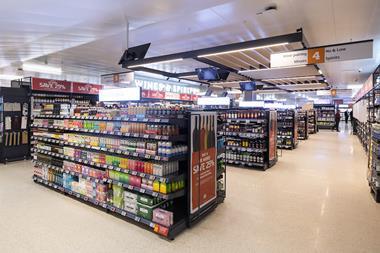
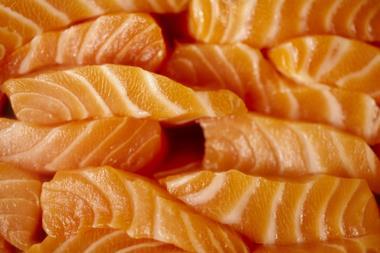

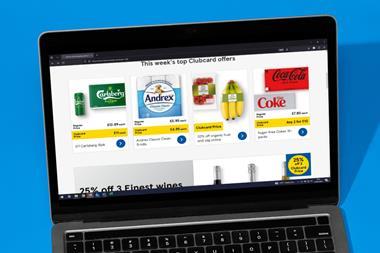

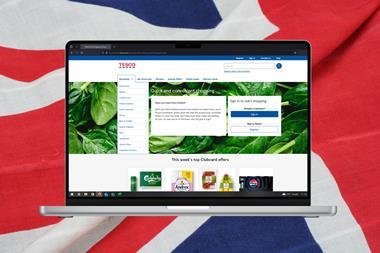


No comments yet